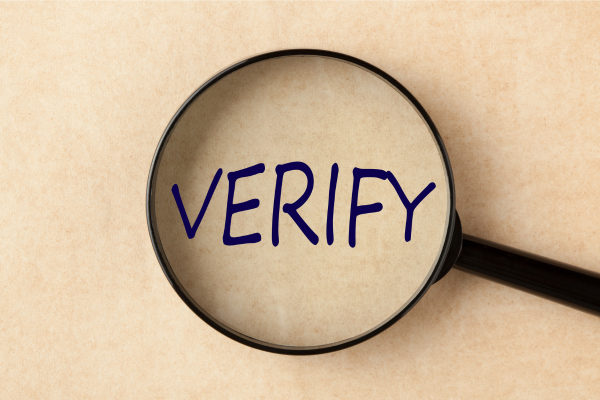An email verifier is a tool or service that checks the validity and authenticity of an email address. It helps users or businesses ensure that the email addresses they have are active, deliverable, and safe to use, particularly in email marketing or communication campaigns. Verifying email addresses prevents issues like high bounce rates, poor deliverability, and damage to the sender’s reputation.
Here’s what an email verifier does in detail:
Syntax Check
- What It Does: Verifies if the email address is structured correctly according to standard email syntax rules. It ensures that the email contains necessary elements like an “@” symbol, a valid domain, and a top-level domain (e.g.,
.com,.org). - Why It’s Important: Many email list issues stem from simple typographical errors. Syntax checks ensure that only properly formatted emails are included.
Domain Verification
- What It Does: Checks if the domain (the part after the “@” symbol) is valid and active. It confirms that the domain is properly registered and can receive emails.
- Why It’s Important: An email with a valid syntax could still be associated with a non-existent or expired domain, leading to delivery issues. Domain verification ensures the domain exists and is capable of receiving emails.
MX Record Check (Mail Exchange)
- What It Does: The verifier looks for MX records in the domain’s DNS (Domain Name System). These records specify which mail servers are responsible for receiving emails on behalf of the domain.
- Why It’s Important: If a domain lacks proper MX records, it cannot receive emails, even if the domain itself exists. MX record checks ensure the domain is configured to receive messages.
SMTP Authentication
- What It Does: The verifier connects to the recipient’s mail server via SMTP (Simple Mail Transfer Protocol) to simulate the process of sending an email without actually delivering it. It queries the server to check if the specific email address exists.
- Why It’s Important: This step directly confirms whether the email address is active and capable of receiving messages. If the server rejects the query, the email address is invalid.
Catch-All Domain Detection
- What It Does: Determines if a domain is configured as a catch-all domain, which means it accepts emails sent to any address under that domain, regardless of whether the address is valid.
- Why It’s Important: Emails sent to catch-all domains may be accepted initially but can later bounce if the specific address doesn’t exist. Detecting catch-all domains allows businesses to be cautious with these addresses.
Disposable Email Detection
- What It Does: Identifies if an email address belongs to a disposable email service, like 10MinuteMail or Mailinator, which provides temporary email addresses that expire after a short time.
- Why It’s Important: Disposable emails are often used to avoid long-term communication, making them unreliable for email campaigns. Verifying and removing them helps maintain a clean, engaged list.
Role-Based Email Detection
- What It Does: Flags role-based email addresses such as
info@domain.com,admin@domain.com, orsupport@domain.com, which are often not associated with individuals but with departments or functions within an organization. - Why It’s Important: Role-based emails may not lead to personal interactions, and some email marketing systems may penalize their use. Removing these from lists helps improve campaign targeting.
Spam Trap Detection
- What It Does: Detects spam traps, which are email addresses created by ISPs or organizations to catch spammers. These addresses do not belong to real users and are not intended to receive legitimate communications.
- Why It’s Important: Sending emails to spam traps can harm a sender’s reputation and lead to blacklisting by email service providers. Detecting and avoiding spam traps is critical for maintaining email deliverability and sender reputation.
Blacklist Check
- What It Does: Verifies whether an email address or domain is listed on known blacklists for abusive behavior, spam activity, or poor email practices.
- Why It’s Important: Sending emails to blacklisted addresses can result in your domain being flagged as spam. Identifying these addresses helps you avoid damaging your reputation and ensures higher deliverability.
Risk Scoring
- What It Does: Some email verifiers provide a risk score or classification (e.g., low, medium, or high risk) based on the likelihood of an email address bouncing or being unsafe for use in campaigns.
- Why It’s Important: This allows marketers and businesses to prioritize which emails to keep, re-check, or remove, improving the overall quality of their email lists.
Real-Time Verification
- What It Does: Some email verifiers offer real-time verification via API integration, which checks an email address as soon as it is entered on a sign-up form or collected by a business.
- Why It’s Important: Real-time verification ensures that invalid or fake emails never make it onto your list, reducing the need for future list cleaning and improving list quality from the start.
Benefits of Using an Email Verifier:
- Improves Email Deliverability:
- By ensuring only valid email addresses remain on your list, verifiers help increase the likelihood that emails will reach their intended recipients’ inboxes, rather than bouncing back.
- Reduces Bounce Rates:
- High bounce rates can damage your sender’s reputation and cause email service providers to block or flag your emails. Verifiers remove invalid addresses to reduce bounce rates.
- Protects Sender Reputation:
- Email service providers monitor bounce rates, spam complaints, and blacklist issues. By using an email verifier, you can avoid sending emails to bad addresses and maintain a positive sender reputation.
- Increases Engagement:
- A clean, verified email list means you’re targeting real, active users, which leads to better open rates, click-through rates, and engagement in email marketing campaigns.
- Cost Efficiency:
- Many email marketing platforms charge based on the size of the email list or the number of emails sent. By removing invalid or risky addresses, you can save money and focus on high-quality leads.
- Prevents Blacklisting:
- Sending emails to spam traps, blacklisted addresses, or inactive accounts can result in your domain being blacklisted by ISPs. Email verifiers help identify and eliminate these risky addresses, keeping your domain in good standing.
- Improves Campaign Performance:
- By ensuring that your emails reach real, engaged recipients, email verifiers help improve the overall performance of your campaigns, leading to higher conversion rates.
In conclusion, an email verifier is an essential tool for anyone running email campaigns or managing large email lists. It ensures that email addresses are valid, deliverable, and safe to use, thereby improving deliverability, protecting your sender’s reputation, and maximizing the effectiveness of your email communications.





